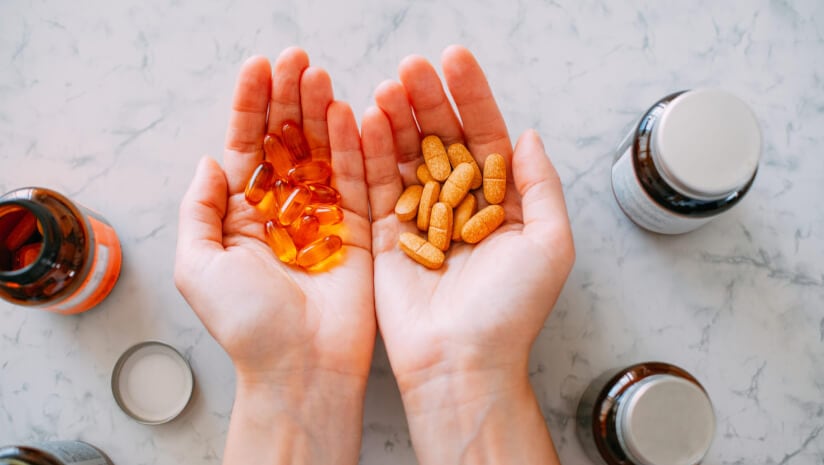The Bundesinstitut für Risikobewertung (BfR) report evaluated the health risks associated with the intake of high-dose vitamin D supplements (bolus doses) taken at intervals of days or weeks, sometimes combined with vitamin K2.
The assessment summarizes the science and findings from human studies with high bolus doses of vitamin D (e.g., 500 µg every 20 days), which can lead to elevated blood vitamin D levels, increasing risks such as falls, fractures and hypercalcemia, especially in individuals already well-supplied with vitamin D. Based on the findings, the BfR advised against the use of high bolus doses of vitamin D and further recommended limiting daily intake of vitamin D supplements to a maximum of 20 µg/day (800 IU).
Professor Eggersdorfer, who has authored numerous papers on the safety and efficacy of vitamin D supplementation, told NutraIngredients that while the advice against the use of high bolus doses of vitamin D is well substantiated, the recommendation that the daily intake of vitamin D should be limited to lower doses, “is going to an extreme position which is not substantiated by human intervention studies.”
He noted that the European Food and Safety Agency (EFSA) recently updated the Tolerable Upper Intake Level (UL) for vitamin D to 100 µg/day (4,000 IU) for adults.
“The update of the UL was developed by key scientists in Europe with experience in assessing safety and the role of micronutrients, including vitamin D and other nutrients,” he said. “The scientists have analyzed and evaluated the relevant human studies with vitamin D in different doses and based their decision on the findings in these studies.”
Human studies demonstrate safety
Professor Eggersdorfer cited several human studies demontrating the safety of vitamin D supplementation with higher daily doses in the range up to 4,000 IU (100 mg/day), including the VITAL study.
VITAL (VITamin D and OmegA‑3 TriaL) was a randomized, double‑blind, placebo‑controlled trial in the U.S. with over 25,800 men aged 50 and older and women aged 55 and older to test whether daily supplementation with vitamin D3 (2,000 IU) and/or marine omega‑3 fatty acids (1 g fish oil) lowers risk of cancer, heart disease and stroke in generally healthy adults 5.3 years of follow‑up.
“The study demonstrated the safety of vitamin D supplementation and a statistically significant reduction in cancer mortality among people taking vitamin D, particularly after two or more years of supplementation,” Professor Eggersdorfer said.
He further noted the DO‑HEALTH study (DO‑HEALTH: Vitamin D3‑Omega‑3‑Home Exercise‑HeALTHy Aging and Longevity Trial), which involved more than 2,000 community‑dwelling adults aged 70 and older from in five European countries who used a similar supplement with vitamin D3 (2,000 IU/day), marine omega‑3 fatty acids (1 g/day — EPA + DHA) and a simple home exercise program.
The results indicated supplementation was safe at this dose and provided benefits in reducing total infections among all participants and had a beneficial effect on systolic blood pressure. The combination of vitamin D with omega-3 reduced the odds of becoming pre‑frail, with no side effects like increase in kidney stones, hypercalcemia or GI symptoms.
“Many studies in which the vitamin D status was measured in the general population indicate that in Germany (as well other countries) a large part of the population is below the recommended level,” he added.
“For example, the publication by Zittermann et al. reveals that more than 50% of the study population had vitamin D levels below 50 nmol/L, which is rated by expert as cut off for vitamin D deficiency. Only around 10% of the study population had vitamin D levels of 75 nmol/L and above, which is rated as optimal by experts.”
While some groups would not benefit from high doses, “the use of supplements with 1,000 IU or 2,000 IU may be a reasonable approach to fill the nutritional gap to achieve recommended and optimal vitamin D levels,” he said
Regarding the negative impacts of low vitamin D status, Professor Eggersdorfer referenced a long-term study of close to 10,000 people in Saarland to investigate the correlation between vitamin D levels and morbidity and mortality led by Hermann Brenner of the German Cancer Research Center in Heidelberg (DKFZ).
The findings indicate that people with vitamin D levels below 30 nmol/L have an increased risk for CVD mortality, cancer and respiratory disease compared with people at levels above 50 nmol/L.





